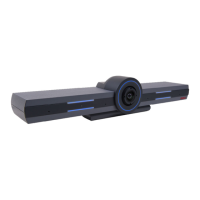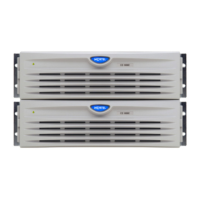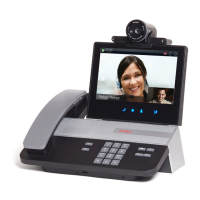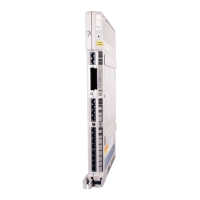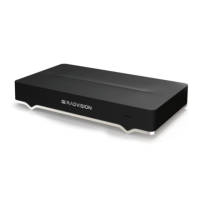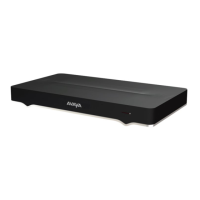Important
• The parameters for controlling the camera are different from the parameters to
connect to the camera (via the URL); both depend on the camera model, check
the specific documentation.
Figure 36: How to Enable Avaya RC100 as Additional IP Camera
Important
• Audio from IP cameras is not supported
Support for Avaya RC100 as USB Camera
You can connect an external USB camera, officially supported for Avaya XT Series (Logitech
C920, C930e or Avaya HC020/HC050/HC010 and now the latest Avaya RC100) to the CU360
device.
To enable an additional USB camera in the CU360 App, browse to
[GUI] CONFIGURE > ADVANCED > I/O CONNECTION> CAMERAS> USB
[WEB] [ADMIN LOGIN] ADMINISTRATOR SETTINGS> I/O CONNECTION> CAMERAS> USB
• Enable: Yes*/No
• Control Camera: Yes/No*
Figure 37: How to Enable RC100 as Additional USB Camera
The USB cameras are opened at up to 720p@30 in this release, when used as an additional live
camera in the CU360 app.
If Control Camera is enabled, the camera can be Pan-Tilt-Zoomed using CU360 remote-control,
and Presets for the USB camera can be saved and recalled.
Important
• Audio from a USB camera is not supported.
• Third-party apps which support selecting a “rear” camera will be able to use the
connected USB camera as well. To PTZ the camera, see Control Camera for
Third-Party Apps
• Once the “Control Camera” option is enabled (camera used for live video), the
presentation via USB (with AV Grabber) is not available.
o To switch back to get the presentation input via USB, set Control Camera
to “No” and restart the device.
MS Calendar with Modern Authentication (OAuth)
Although the mandatory switch from basic authentication to more modern security measures,
announced by Microsoft, has been postponed, modern authentication, which is based on Active
Directory Authentication Library (ADAL) and OAuth 2.0, offers a more secure method of
authentication to the Microsoft Exchange Calendar.
Basic authentication requires the Avaya CU360 App connecting to the Microsoft Exchange
Online Server to pass customer’s personal (or room’s delegate) credentials – email and
password – with each request, to retrieve the associated Calendar. Credentials are stored,
encrypted, in the device.
Modern authentication does not require the customer to insert their own credentials in the
CU360 device, but instead relies on tokens, typically obtained via another mobile device or laptop
owned by the customer.

